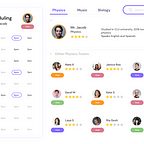The Bizzare Pandemic Clock
Redesigning the Obsolete Wall Clock: A joke turned concept revival for the post pandemic shut-ins.
When it comes to becoming obsolete, nothing can escape that fate that comes as a product of evolution, change, desire for novelty and the passage of time. Not even objects that tell time itself. Time pieces have a very distinct and culturally significant history, evolving from shapes, sizes, units of measurements, and even the cultural associations.
Neverthless, they are obsolete.
As history progressed, time pieces have become more efficent, smaller, portable, precise. From the first ever mechanical time piece with a precision error of one second every fifty seconds and the size of a large lathe machine, to the small numeric markings on the very corner of our smartphone screens which automatically sets the most accurate time, time telling devices have evolved in a rather linear fashion.
get smaller
get more precise
and finally, after the industrial revolution, to become more manufacture friendly.
But during the pandemic, living as a shut in really got me thinking, is precision really the most desirable trait in a time piece? Ofcourse nobody likes a faulty clock. And that is not my point. When I was living a typical day in quarantine, 4: 23pm and 4:15pm were pretty much the same.
Most people just cared if it was day or night; or worse…
people just looked at the clock to estimate the “length” of time between “now” and “sundown”. The clock was just an intermediate tool or medium. Altough it may seem too farfetched to some, this newly found perspective of is a reality for many. But just because time is literally just a concept of black and white, dosent mean its a lazy person’s view of the world. Its just one of the many ways in which people percieve the passage of time. It was very interesting for me to understand and interpret this into ideations.
To put it simply, there was even a joke that went
“ Why do we have somany hours in the clock? it should be just 12 digits alternating between day and night instead”
And that made somuch sense in some weird way because, this is exactly what a designer would do to make something more efficient and USEFUL. take ot the extra unnessesary bits, even if its extremely igh tech or aesthetic if it nolonger serves a pursose. Having added elements just dosent always act as an advantage.
So I took the joke forward and tried to create a timetelling piece that has a unique approach.
The whole aim of this concept was to remove the unnesesary elements that might not be nessecary.
Also to tackle other problems like shortsightedness, which is a problem in both digital and analogue clocks. And Inclusivity, across cultures, languages and education levels, if possible.
But i wanted it to be something fresh thats also based off of something people are used to seeing in their everyday life.
It didnt take much of thinking for me to land on the toggle button feature of UI design as my primary inspiration. The concept is simple, common and communicative. Yet, it would be refreshing to blend it with the idea of timetelling.
Wall clocks are prettymuch obsolete in the traditional sense but their sales are still soaring high as this is one of those products that has, over time, switched its niche from a mundane consumergoods market to something of more aesthetic value.
It has become an item of presentation and flaunting in the living room, a homedecor item that could entertain the guests with its perfomative design features. by performative design features, I donot mean juggle the wine glasses inront of the horrified guests, but rather, be unique in some way or form that would puzzle the user. This sparks the curiosity of the user and draws their attention to the design. Maybe its dysfuntionality itself is the amusement.
Its crazy to imagine that people are willing to spend money on these goods, but if designed with good intention, its worth the buck.
A prime example of this that I love to mention again and again is Don Norman’s Case study of three teapots in the book emotion and design, where he states that attractive things work better. Now dont let the title decieve you; Its definitely worth the read.
My point being, I had enough inspiration around me to do something a little out of my regular line of design process with the possibility of probably making something even more obsolete that the existing wall clock. But I was willing to take the risk and experiment out of my comfort zone.
I acidentially stumbled across this GIF and it was exactly the kind if inspiration I needed. So I got to work on my model.
The concept was quite simple, so this was one of those rare projects where i broke the rules and started out with the CAD model instead of thumbnail sketching, because I knew exactly what I wanted to create; and it was a rather simple concept.
The whole point of it was just to percieve timetelling a little differently.
so..
******drumrolls*****
FIN
